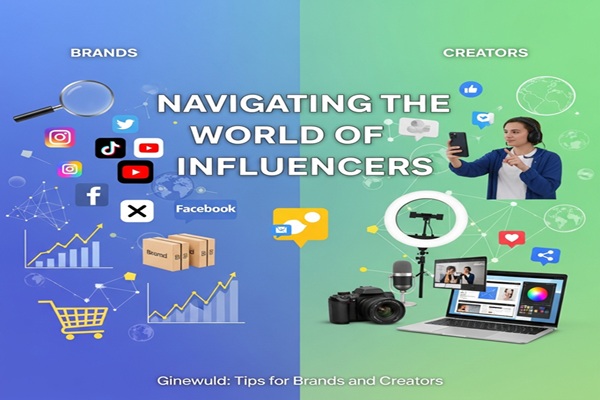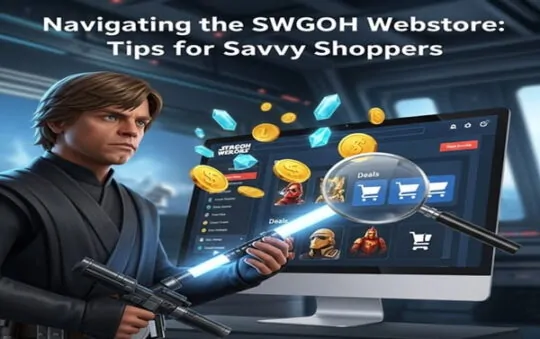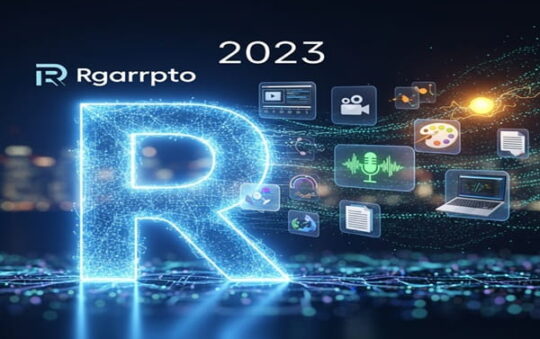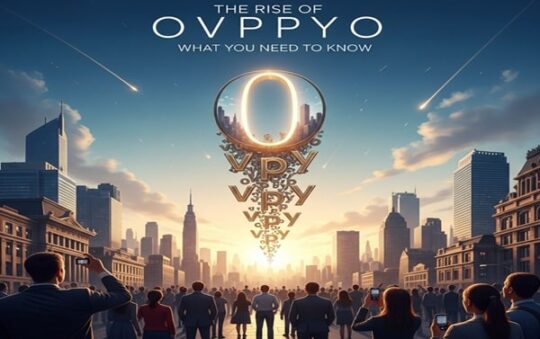You’ve probably seen the term Influencersginewuld popping up online, but what does it actually mean? Think of it as the next generation of influencer marketing — where creativity, authenticity, and connection take center stage. These individuals aren’t just promoting products; they’re shaping how brands communicate and build trust with real people.
Unlike traditional ads that scream “buy this,” influencersginewuld work by sharing genuine stories that resonate. They blend personality with purpose, helping brands reach audiences in ways that feel organic and relatable. Whether you’re a business owner or a creator, understanding how this movement works can completely change the way you approach marketing.
Contents
The Rapid Rise of Influencersginewuld
Influencersginewuld didn’t just appear overnight. As people grew tired of flashy, impersonal ads, they started gravitating toward creators who felt real and relatable. These creators built communities based on trust — and that authenticity became their superpower.
Brands noticed. Instead of spending huge sums on generic ad campaigns, they began investing in collaborations with influencers who could reach niche audiences with genuine enthusiasm.
Here’s why this rise feels so powerful:
-
People trust people more than logos.
-
Engagement is higher when content feels personal and story-driven.
-
Communities form around shared values, not just products.
This shift has completely transformed how companies approach marketing and audience engagement.
Why Influencersginewuld Matter More Than Ever
Influencersginewuld sit at the intersection of creativity and strategy. They don’t just post pretty pictures or catchy videos; they design experiences that connect emotionally.
Here’s what sets them apart:
-
Authenticity over aesthetics: Their content feels real, not rehearsed.
-
Conversation over conversion: They focus on building relationships first.
-
Community over clicks: It’s not about vanity metrics — it’s about genuine interaction.
This is why brands see impressive results when working with them. A trusted voice sharing an honest opinion can turn a curious follower into a loyal customer.
The Different Types of Influencersginewuld
Not every influencer fits the same mold. Here’s a quick breakdown of the main types:
-
Micro-Influencers (1K–100K followers):
Known for close-knit communities and strong engagement. Perfect for brands wanting authenticity and credibility. -
Macro-Influencers (100K–1M followers):
Great for broad awareness campaigns and larger reach, especially when launching a new product or idea. -
Mega-Influencers (1M+ followers):
Think celebrities and household names — perfect for maximum visibility, though often at a higher cost. -
Niche Influencers:
Focused on specific topics like travel, wellness, or tech. Their specialized knowledge makes them ideal for targeted campaigns. -
Virtual Influencers:
AI-generated personas gaining popularity for their futuristic appeal. They’re reshaping what “influence” means in digital marketing.
Each type has its advantages — the key is finding who aligns best with your brand’s message and audience.
The Real Benefits of Collaborating with Influencersginewuld
When done right, influencer collaborations can spark incredible results. Here’s what you can expect:
-
Increased visibility: Creators introduce your brand to audiences who genuinely trust them.
-
Authentic storytelling: Instead of forced promotions, your message becomes part of an engaging narrative.
-
Higher engagement: Likes, comments, and shares flow naturally when followers connect with the content.
-
Boosted sales: A trusted recommendation often carries more weight than a paid ad.
-
Valuable insights: Influencers offer firsthand knowledge about audience preferences and behavior.
It’s not just marketing — it’s relationship building that delivers measurable outcomes.
How to Find the Right Influencer for Your Brand
Choosing the right collaborator is the foundation of a successful campaign. Here’s how to get it right:
-
Define your target audience. Know who you want to reach and what they care about.
-
Study potential influencers. Check engagement rates, tone, and consistency.
-
Ensure value alignment. Their beliefs and message should complement your brand’s core values.
-
Analyze past partnerships. Look at their previous collaborations to gauge professionalism and impact.
-
Use data tools. Platforms like HypeAuditor or Upfluence can help you verify engagement authenticity.
Take your time — the best partnerships are built on genuine connection, not just numbers.
Negotiating Fair and Transparent Agreements
Once you’ve found the right influencer, clear communication is everything.
-
Set goals early. Define what success looks like — more visibility, engagement, or conversions.
-
Clarify deliverables. Outline post frequency, content format, and deadlines.
-
Be open about compensation. Payment can include money, products, or performance-based bonuses.
-
Put it in writing. A simple agreement ensures both parties understand expectations and responsibilities.
Negotiations aren’t just about the deal — they’re about building long-term trust.
Proven Tips for a Smooth Collaboration
To make your campaign stand out, follow these best practices:
-
Keep communication open. Regular check-ins prevent misunderstandings.
-
Allow creative freedom. Influencers know what resonates with their audience — let them tell your story their way.
-
Set realistic deadlines. Rushed content often loses authenticity.
-
Measure as you go. Track engagement and performance throughout the campaign.
-
Celebrate success together. Acknowledge wins and nurture ongoing relationships.
A good collaboration feels like a partnership — both sides should benefit equally.
Measuring the Impact of Your Influencersginewuld Campaign
To know if your strategy worked, monitor key performance indicators (KPIs) like:
-
Engagement rate: Comments, likes, and shares show how well content resonates.
-
Reach and impressions: Track how many people saw the post.
-
Referral traffic: Use analytics to check how many visitors came from influencer links.
-
Sales and conversions: Measure how influencer content affects actual purchases.
-
Audience sentiment: Monitor how people talk about your brand after the campaign.
These metrics help refine future strategies and identify which partnerships deliver the best return.
Also Read : WhyChoosePro.com: The Ultimate Resource for Professional Growth
Common Challenges (and How to Handle Them)
Even with planning, challenges can arise. Here’s how to tackle the most common ones:
-
Value misalignment: Always research influencers thoroughly before collaborating.
-
Communication breakdowns: Keep discussions transparent and continuous.
-
Difficulty measuring ROI: Use tracking tools and unique discount codes to measure impact accurately.
-
Content fatigue: Let influencers take creative risks to keep audiences engaged.
Flexibility and trust go a long way in overcoming these issues.
The Future of Influencersginewuld
The evolution of influencersginewuld shows no signs of slowing down. As new platforms emerge and technology continues to reshape communication, opportunities for meaningful partnerships are expanding.
Here’s what’s next:
-
Micro and nano influencers will dominate thanks to their loyal, engaged communities.
-
AI-driven creators will redefine storytelling through digital avatars.
-
Transparency laws will make honesty in advertising more important than ever.
-
Authenticity will remain king — followers will always favor genuine voices over polished ads.
The future belongs to brands and creators who collaborate with integrity, creativity, and purpose.
Final Thoughts
Influencersginewuld has reshaped how people connect, share, and inspire. It’s more than marketing — it’s about storytelling that feels personal and real.
Whether you’re a brand looking to grow your reach or a creator ready to make an impact, embracing this movement can open doors to lasting relationships and authentic success.
The most powerful partnerships are built not just on numbers but on trust, creativity, and a shared belief in the value of human connection.




